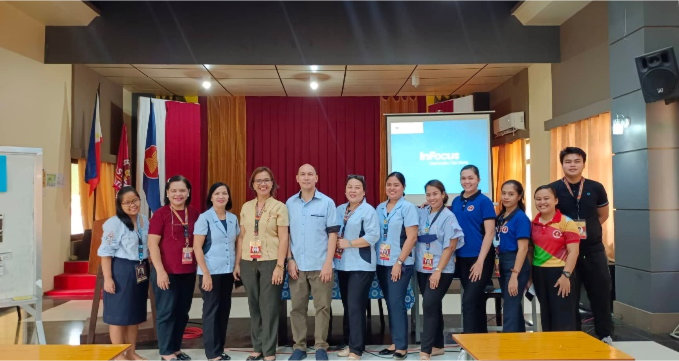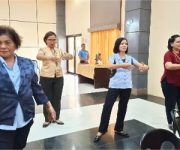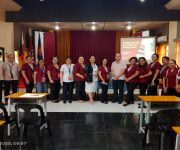The College of Arts and Sciences-Department of Languages and Literature conducted a two-day in-person seminar in relation to the teaching of Art appreciation on November 28 and 29 at the Graduate School Function Hall.
This initiative is in connection with the teaching of Art Appreciation by the department’s faculty members, thereby capacitating the latter with content knowledge, methodology, and germane approaches to effectively deliver the course.
According to CHED rationale, this course “equips students with a broad knowledge of the practical, historical, philosophical, and social relevance of the arts to hone students’ ability to articulate their understanding of the arts through interdisciplinary and multimodal approaches.”
Geared towards providing quality content and pedagogy to the students, the department invited a faculty member from the Department of General Education, Dr. Carmelito Nomer Abolencia, as the resource speaker of the forum. Dr. Abolencia foregrounded four integral facets of Art appreciation: Introduction to Art Appreciation, Concepts, and Methodologies in Art Appreciation, Performing Arts, and Visual Arts.
The first part of the session accentuated the general framework and foundations of Art Appreciation. Likewise, he imparted salient features of Art. “Art Appreciation has its own interpretation, and one may have his/her own interpretation of the Art,” said Dr. Abolencia.
The activity presupposes that through the course, students will be able to appraise artwork utilizing aesthetic merit, cultural normativity, and societal pertinence.
Integrating Approaches to the teaching of the course, the resource speaker facilitated Black poetry activity, wherein, using an old newspaper, the attendees crafted poems by highlighting words and deleting intersentential entries irrelevant to the topic prepared by the participants. This activity will allow students to interact with the text and use it to craft their own pieces with semantic relevance.
The grit of the attendees to be capacitated is evident by sharing local performing artists, amplifying the areas of Art where they excel. This activity will expose the students to the local artists who contributed significantly to Art, such as painting, dance, literature, and music.
Lastly, the students may appreciate the teaching of Visual Arts if there are concrete examples of the subject under study. This will augment interaction resulting in the appreciation coming from the students. Meanwhile, the teacher may utilize local artifacts to be integrated into the teaching of the course.
Anent the roadmap for teaching the course, Prof. Mark Ignatius Tobias from the Department of Mathematics and Statistics shared a sample syllabus and module with the participants. Embedded therein are activities that may be helpful for the Faculty during the conduct of the lesson.
Commendable suggestions were shared by the attendees concerning the approaches to teaching the course.
Thus, the teaching of Art Appreciation goes beyond the edificial consciousness of various masterpieces; This is an avenue to revisit down memory lane of innovation, novelty, and artistry of humanity and is a clear manifestation of man’s manifold creativity translated into arts.










